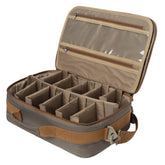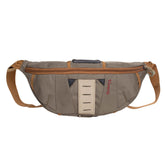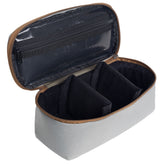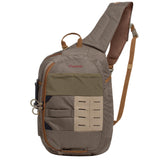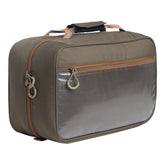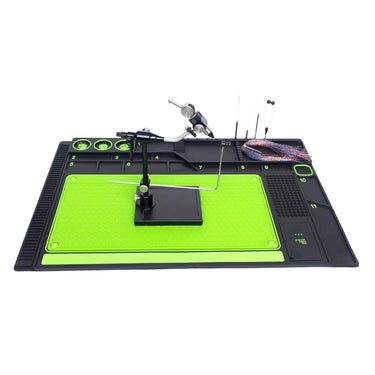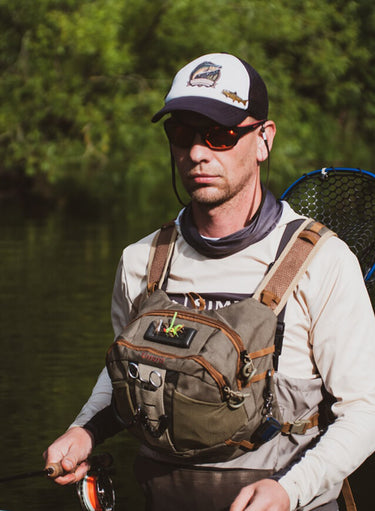Fly Line: Understanding Weight for Stillwater, Streamers, and Cold Weather Fishing
Choosing the right fly line weight is essential for effective fly fishing in various environments. For stillwater fishing, I typically opt for a line weight that matches the size of the fish I’m targeting and the conditions of the lake. This ensures that my cast is precise and the presentation is optimal, maximizing my chances for a successful catch.

When I’m fishing with streamers, I select a heavier line to better manage the weight of my flies and achieve the desired depth. A line weight that is appropriate for the type of streamer I'm using allows me to cover more water quickly, which is crucial when targeting aggressive fish in rivers and lakes. Adjusting my line weight based on the season and weather also plays a significant role in my strategy.
In colder weather, I take special care with line selection. Using a line designed for cold conditions maintains flexibility and performance, allowing me to fish effectively even when temperatures drop. Choosing the right fly line not only enhances my fishing experience but also increases my success rate on the water.
Fly Line Fundamentals
Understanding the essentials of fly line will enhance my fly fishing experience. Key aspects include the significance of fly line weight, its components, and how to choose the appropriate line for specific fishing conditions.
Understanding Fly Line Weight
Fly line weight is critical in determining how efficiently I can cast and present flies. Weight is categorized by numbers, typically ranging from 1 to 14, indicating the line's thickness and density.
For freshwater, a weight of 4 to 6 is often ideal for most species, like trout and steelhead. In contrast, heavy lines, such as 8 to 10, work better for larger fish, like salmon.
The weight also influences the taper of the line, with options available like weight-forward or double taper. Each taper type serves distinct purposes, affecting casting distance and accuracy.
Components of Fly Lines
Fly lines consist of various components that impact performance. The outer coating is typically made from PVC or polyurethane, allowing durability and flexibility. Under this coating, I find a braided nylon multifilament core, which gives the line its strength and responsiveness.
Lines may feature welded loops at the front and back for easy leader attachment. This design minimizes knot-related issues and enhances line management during casting. The taper design, which varies depending on the line type, also impacts how the line behaves in water.
Selecting the Right Fly Line
Choosing the correct fly line requires assessing my fishing environment and target species. For stillwater fishing, a floating line is often suitable, as it allows for excellent surface presentations.
When using streamers in rivers, a sink-tip line can help get my flies to the desired depth quickly. Cold weather conditions necessitate specialized lines designed to remain supple and effective in low temperatures.
I must also consider the specifics of my rod and reel; compatibility is vital for optimal performance. This ensures effortless casting and retrieval, ultimately making my fly fishing experience more enjoyable.
Fly Line Weight Considerations
Choosing the right fly line weight is essential for successful fishing. Different types of fishing require specific line traits to effectively present flies and manage varying conditions.
For Stillwater Fishing
When fishing in stillwater, I prefer using a floating line for most scenarios. Lakes typically feature calm waters, making it easier for fish like steelhead and salmon to approach flies without disturbance. The standard weight for this type of fishing usually falls between 5 to 7, depending on the target species.
I focus on using larger flies to attract these fish. The appropriate line weight allows for a proper dead drift and provides enough control to manage the line on the water surface. Properly matching the line with rod and reel specs maximizes casting distance and accuracy.
For Fishing with Streamers
When using streamers, I typically opt for a heavier line weight, often around 6 to 8. Streamers require quicker retrieves and more aggressive presentations to entice fish. This adjustment compensates for the added weight of the fly, ensuring that it sinks effectively and maintains its intended action.
In addition, I pay close attention to water temperature and fish behavior. In colder water, I might opt for sinking or intermediate lines to reach deeper. The right weight helps maintain the intended action of the streamer, making it more appealing to fish.
For Cold Weather Conditions
In cold weather, the line weight I choose can significantly impact performance. I often downsize my line, using weights around 4 to 6. This is particularly effective for freshwater species that are less aggressive in colder temperatures.
I also consider that cold conditions can affect the line's buoyancy and flexibility. To counteract this, I select specialized cold-weather fly lines designed to remain manageable even in low temperatures. These choices help maintain casting efficiency and ensure accurate presentations despite challenging conditions.
Advanced Fly Line Technologies

In modern fly fishing, advanced fly line technologies significantly enhance performance and versatility. Specialized tapers and innovative core materials are key elements that enable anglers to tailor their equipment to specific conditions and techniques.
Specialized Tapers and Coatings
The taper design of a fly line affects casting distance, accuracy, and presentation. With advanced tapers, I notice better control over line delivery, particularly in scenarios like dry fly fishing. Various profiles, such as weight-forward or double-taper, cater to different casting styles.
Coatings, such as those offered by Airflo, improve line floatation and durability. A floating line with a specialized coating maintains its buoyancy and resists water absorption. Enhanced slickness also reduces drag, allowing for smoother casts and better line management on the water's surface.
Hi-Tech Core Materials
The core material of a fly line can greatly influence its performance. I often prefer lines with a power core made of braided nylon multifilament, as this construction provides strength and sensitivity. It excels in temperature variations, making it ideal for cold weather fishing.
Additionally, these hi-tech cores ensure excellent casting accuracy and line control. The stretch characteristics of these materials reduce shock on the tippet, increasing my success when battling fish. By selecting lines with advanced core technologies, I experience improved feel and responsiveness, enhancing my overall fishing experience.



